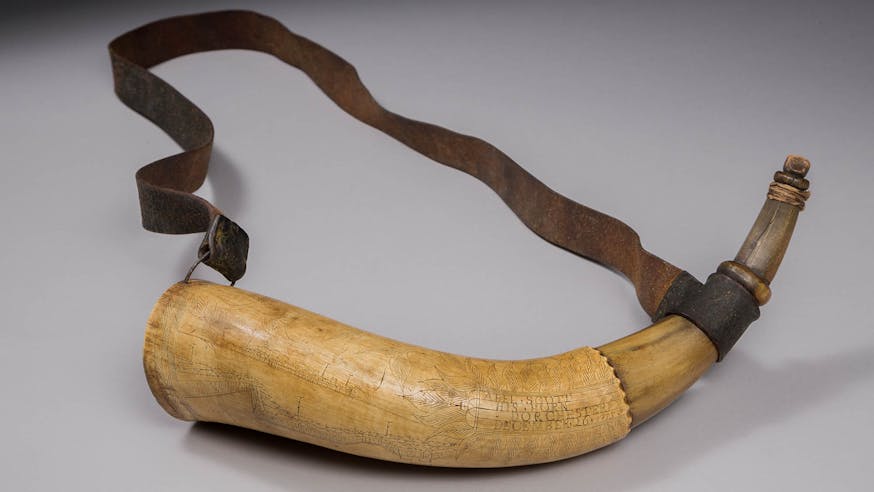Samuel Dudley's Powder Horn
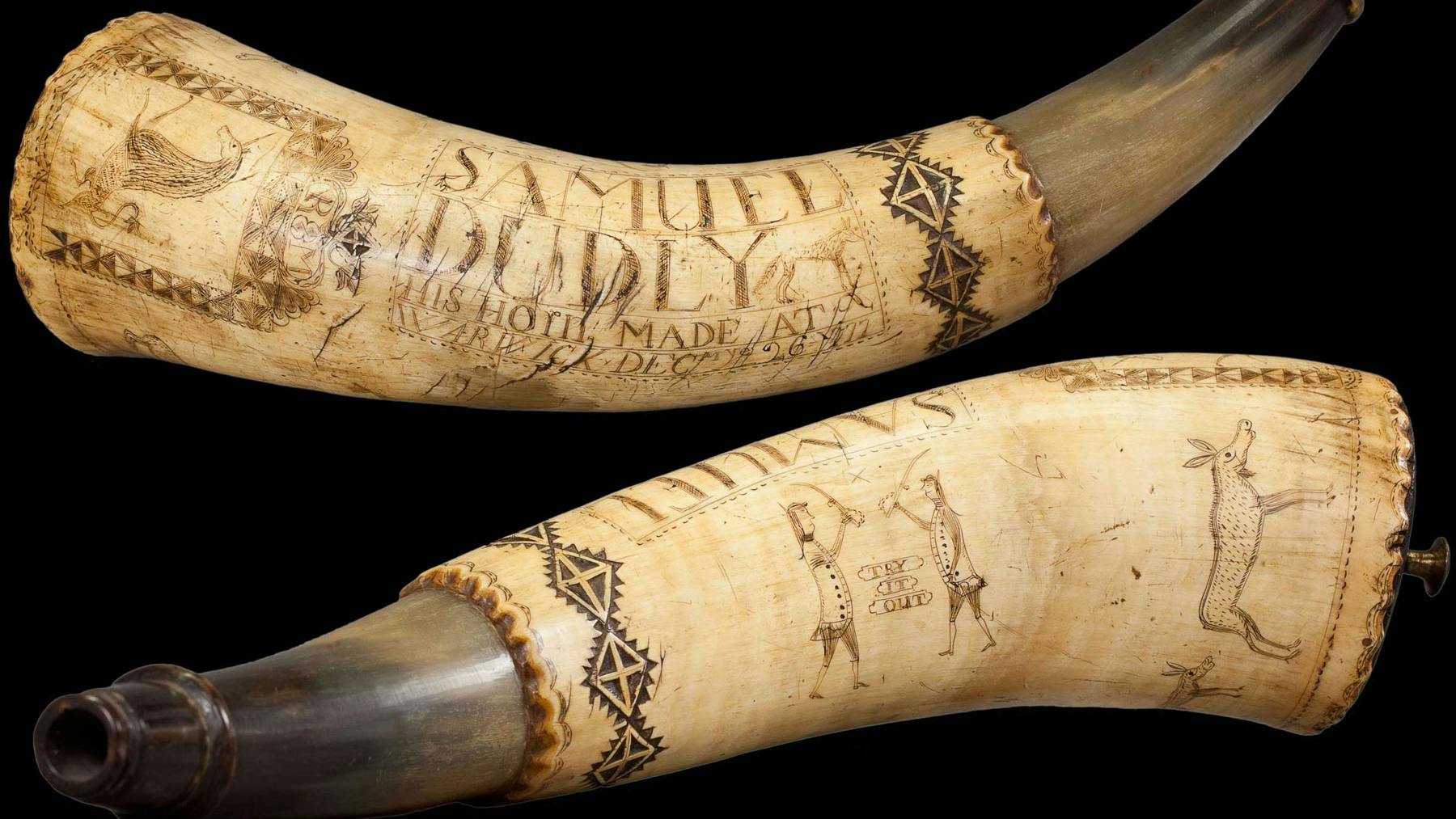
-
Not on View
-
This charming powder horn was engraved for Samuel Dudley, a New England soldier serving in Warwick, Rhode Island, in December 1777. The engraved decoration — including a whimsical unicorn, a pair of moose, and two sword-wielding figures with the phrase "Try It Out" — is attributed to Jacob Gay, a prolific powder horn engraver whose surviving work spans 1758-1787. Gay may have been a soldier himself, carving horns to earn extra money or food while serving in the American Army.
Object Details
-
Powder Horn
Engraved by Jacob Gay
Warwick, Rhode Island
December 26, 1777
Horn (cow), Wood
Museum of the American Revolution
2003.00.0117
Take a Closer Look
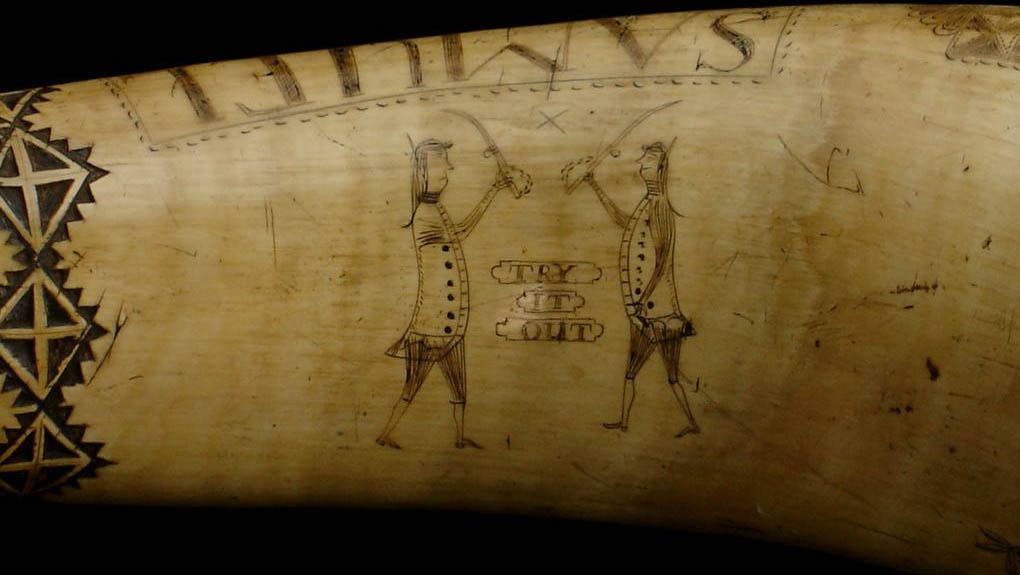
Tags
Related Collections
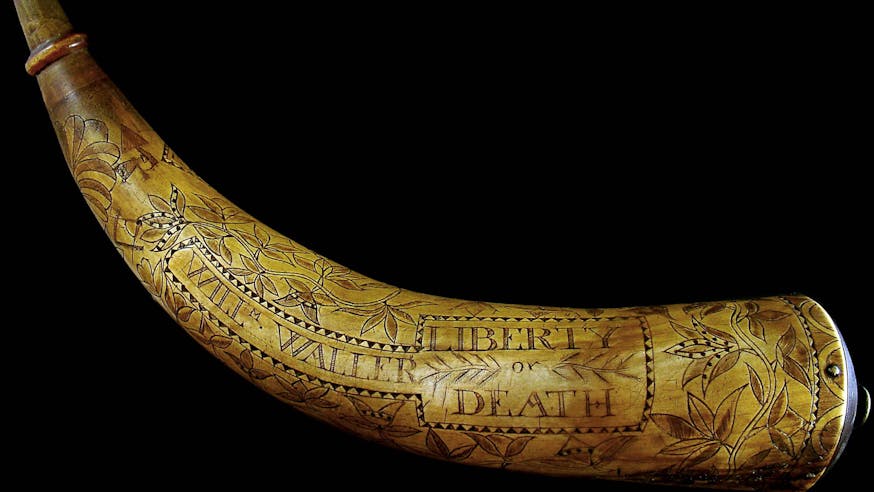
William Waller's Powder Horn
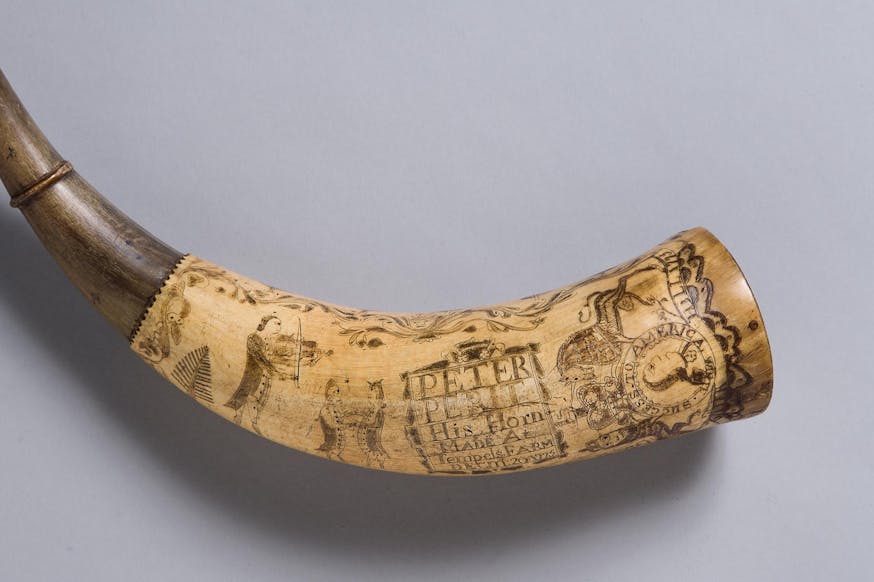
Peter Perit’s Powder Horn
